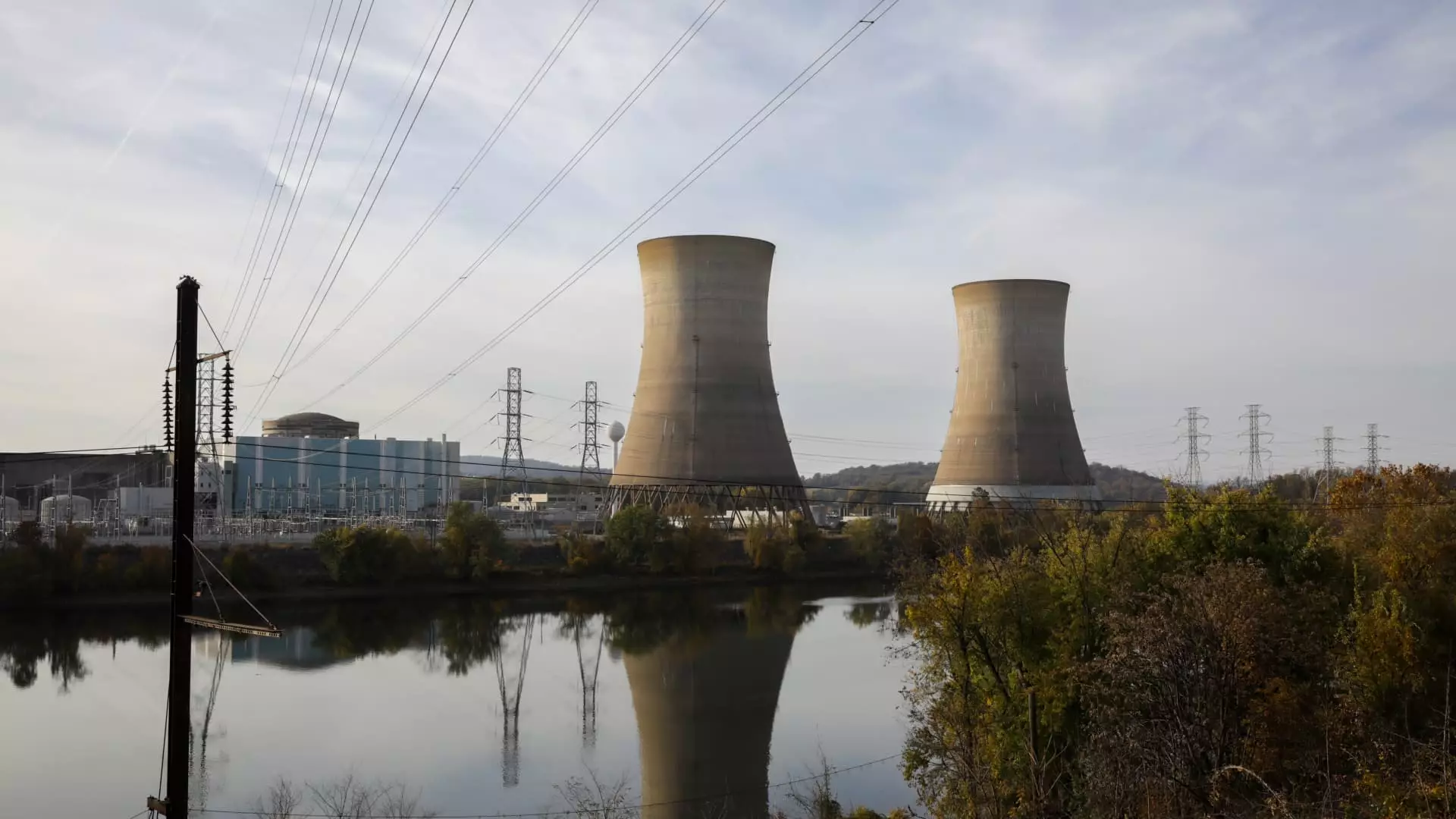In a stunning turn of events, companies in the energy sector closely tied to the burgeoning field of artificial intelligence (AI) found themselves facing significant declines in their stock prices. This downturn ironically coincided with the rise of China’s DeepSeek, an open-source AI laboratory that has prompted many to rethink the energy consumption dynamics of AI applications. This article delves into the repercussions of DeepSeek’s advancements on U.S. energy firms, exploring the market reactions and the broader implications for the power landscape.
On early Monday morning, as the news of DeepSeek’s introduction to the market spread, power companies perceived as vulnerable to competitive pressures experienced severe stock price drops. Constellation Energy and Vistra saw declines exceeding 16%, while GE Vernova plummeted nearly 18% and Talen Energy lost more than 15%. This shake-up raises questions about the immediate stability of energy companies that were previously buoyed by optimistic projections surrounding the AI data center boom.
In recent months, entities like Constellation, Vistra, and GE Vernova positioned themselves as pioneers in a rapidly evolving market. With projections suggesting that AI data centers would require immense amounts of energy, these companies attracted investor interest and saw substantial gains. However, the tide turned as apprehensions about rising competition from China’s AI initiatives became a focal point for cautious investors.
The release of DeepSeek’s AI model on Christmas Day was characterized by Scale AI CEO Alexandr Wang as “earth shattering,” a sentiment that resonated across financial markets. Then, in a recent interview, he remarked on the competitive positioning of DeepSeek, suggesting that it had effectively matched or surpassed the capabilities of leading U.S. models such as OpenAI’s. This swift progression raises concerns regarding the future of American AI dominance and how this could affect energy consumption patterns.
Moreover, this new AI frontier is characterized by substantial efficiency gains, with Microsoft CEO Satya Nadella emphasizing DeepSeek’s “super-compute efficiency.” This opens up discussions around the potential need for less energy than previously estimated for data processing at AI centers. The shift in energy demand speculation can alter how energy companies allocate resources and plan for growth.
In anticipation of heightened electricity demand from data centers, many technology firms have turned to nuclear energy as a reliable, carbon-neutral source of power. For instance, Constellation has forged an agreement with Microsoft to revitalize the Three Mile Island nuclear facility. Additionally, Talen Energy is supplying power to an Amazon data center using the adjacent Susquehanna nuclear plant. Despite these initiatives, the lack of agreements from companies like Vistra illustrates the uncertainty still pervading the sector.
Interestingly, analysts from Bank of America have underscored that investments in electrical grids—both in the U.S. and Europe—are crucial for keeping pace with load growth. These infrastructures are currently underfunded, presenting a bottleneck for future energy requirements. Such insights reveal that the promise of AI is not just about the immediate gains of energy suppliers but also about the long-term sustainability of energy resources.
The dramatic decline of several major U.S. power companies serves as a cautionary tale, underscoring the impact that competitive dynamics in the tech sector can have on the energy market. With China’s advancements in AI challenging the perceived need for high energy consumption, U.S. energy companies must now navigate a landscape fraught with uncertainty. The question emerges: can they pivot quickly enough to adapt to shifting expectations or will they continue to face vulnerabilities as the market recalibrates?
As companies reevaluate their energy strategies and investors adjust their outlooks, one thing remains clear: the intersection of AI and energy is an evolving story, and the lessons learned from this recent turmoil will shape the future of both sectors. The alignment of energy consumption with technological advancement will be critical for both the sustainability of energy resources and the continued growth of AI technologies.

